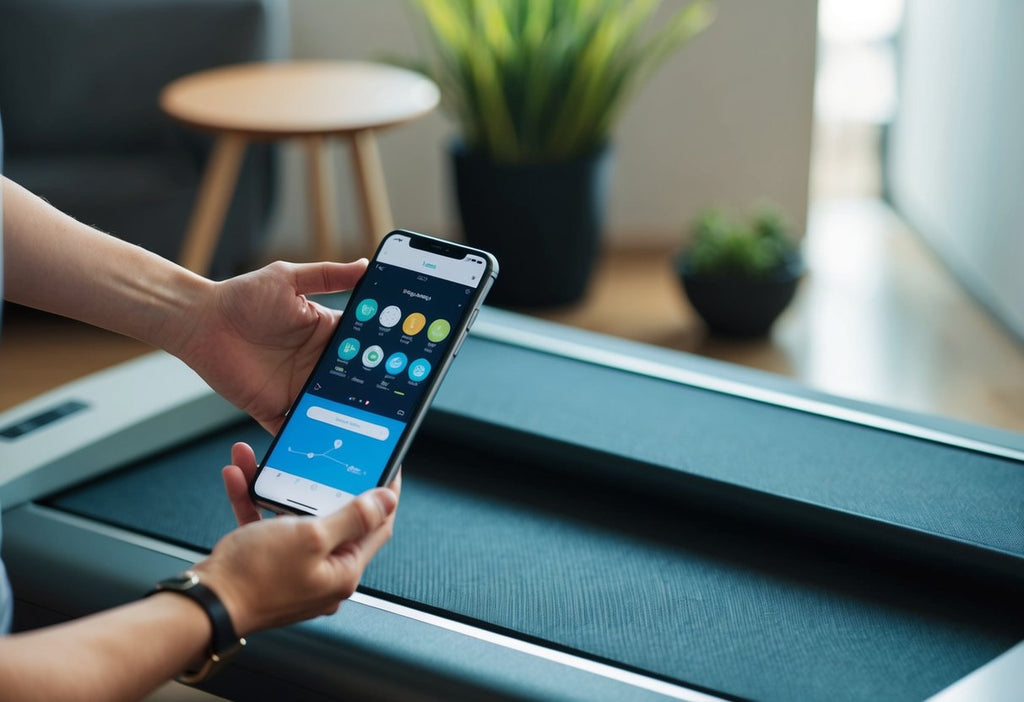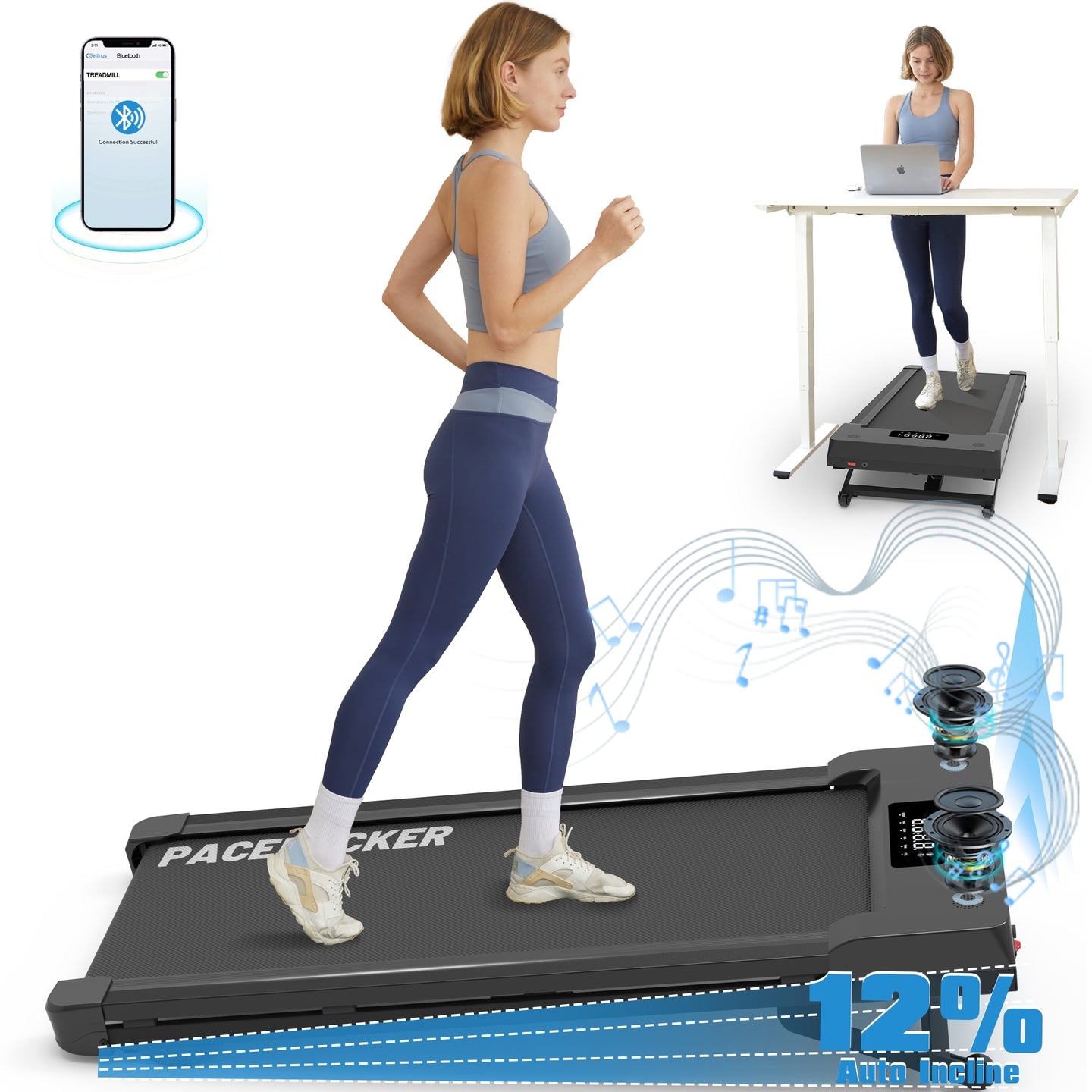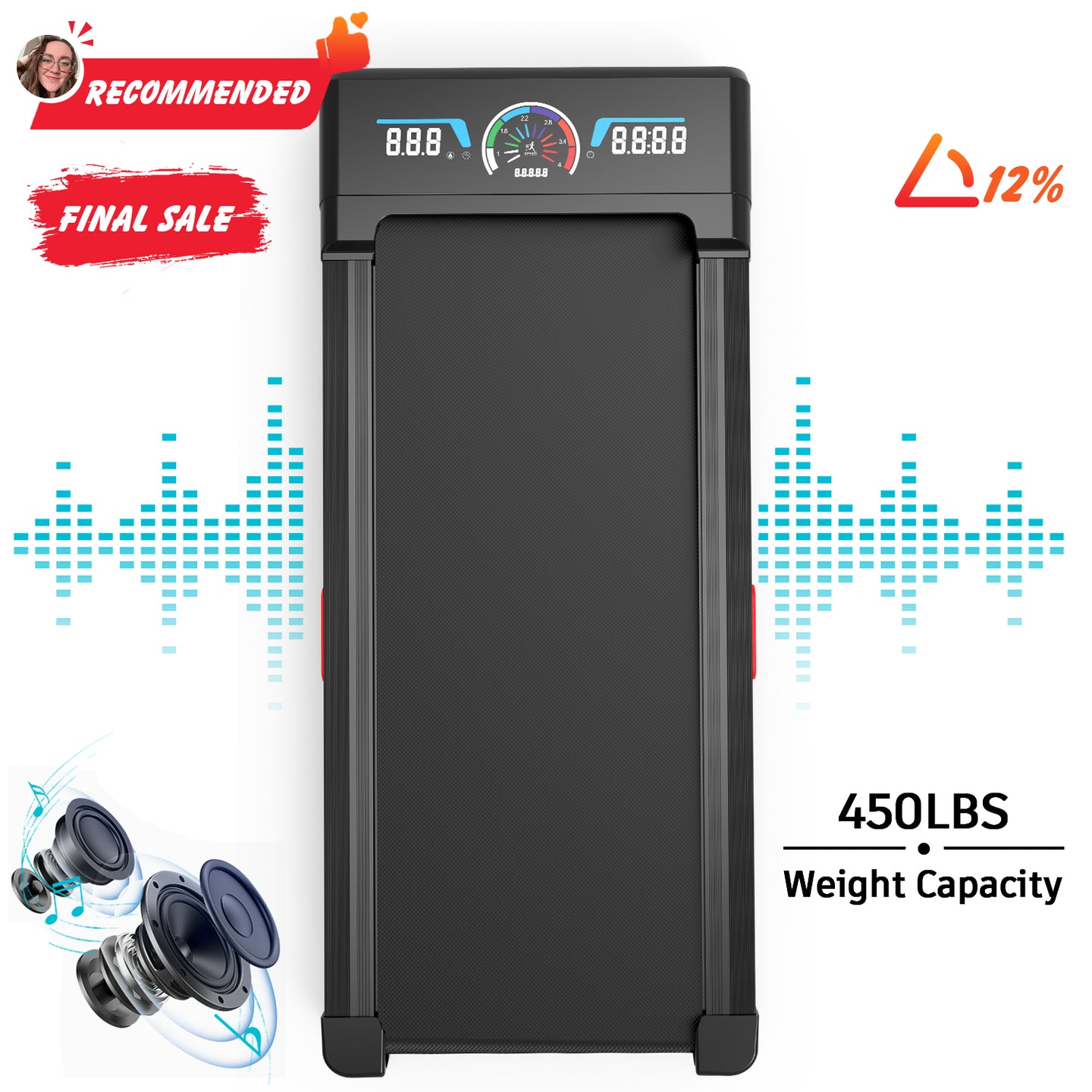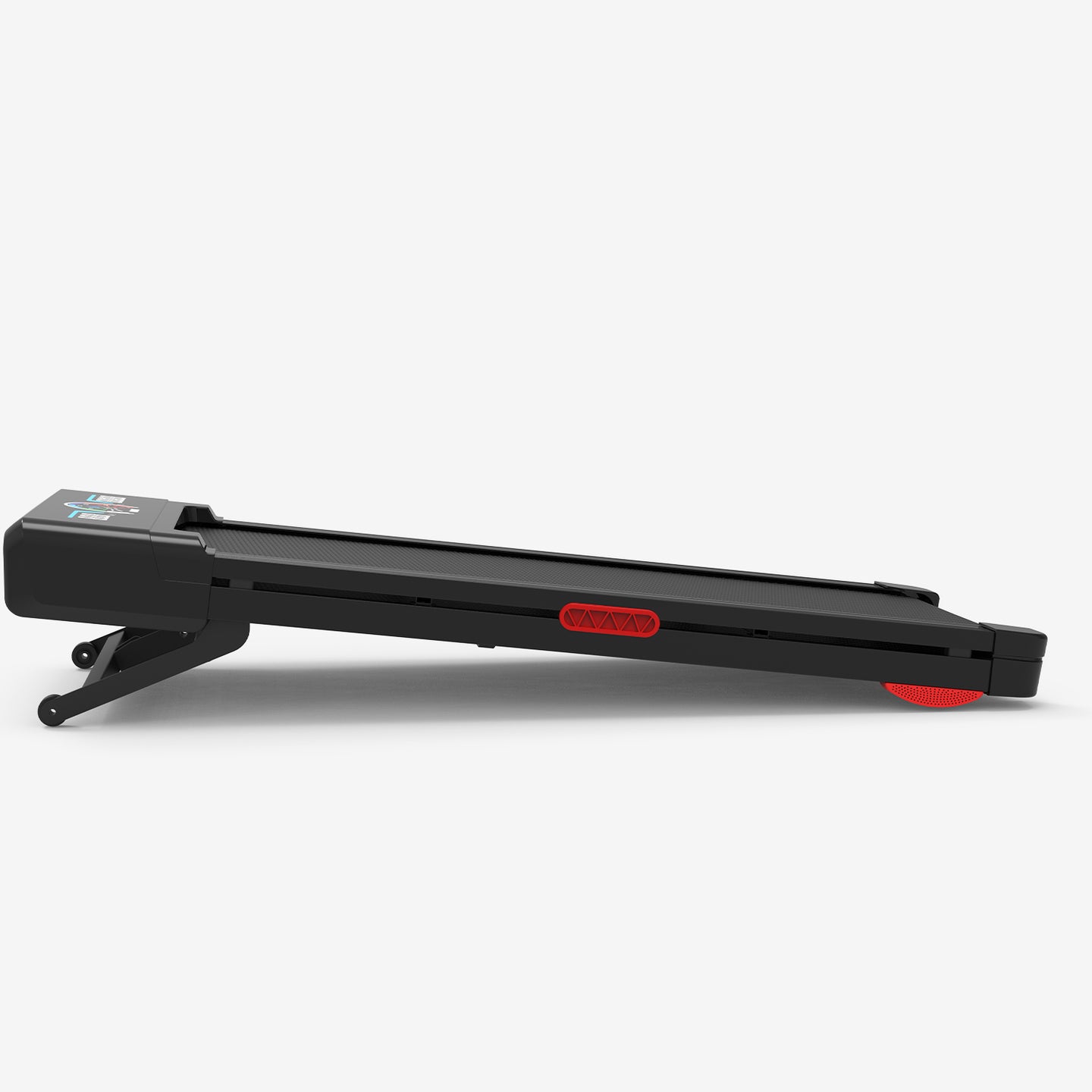Walking Pad Treadmill Workouts for Seniors
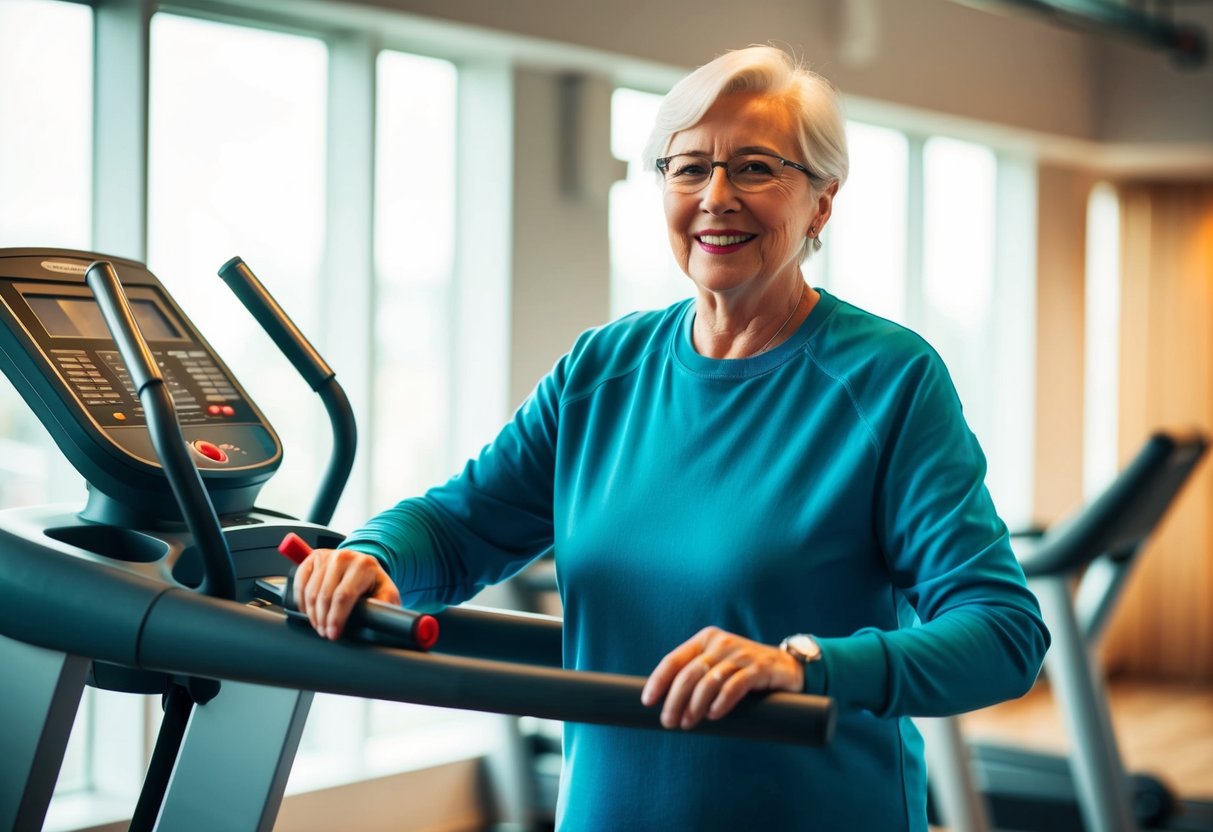
Don’t forget to check out our Pacerocker, Trailviber, and Trailviber Auto Incline walking pad treadmills.
Walking pad treadmills are revolutionizing senior fitness routines, offering a convenient and safe way to stay active at home. These compact devices provide the benefits of walking without the need to brave outdoor elements or navigate crowded gyms. Regular use of walking pad treadmills can improve cardiovascular health, balance, and mobility for seniors while reducing the risk of falls.
We've seen firsthand how these innovative machines have transformed the lives of many older adults. By incorporating walking pad workouts into their daily routines, seniors can maintain their independence and boost their overall well-being. The low-impact nature of these exercises makes them ideal for those with joint issues or limited mobility.
Getting started with a walking pad treadmill is easier than you might think. With adjustable speeds and user-friendly controls, seniors can tailor their workouts to their fitness levels and gradually increase intensity over time. Let's explore how these devices can help you or your loved ones stay fit and healthy in the comfort of home.
Key Takeaways
- Walking pad treadmills offer safe, convenient exercise for seniors at home
- Regular use improves cardiovascular health, balance, and mobility
- These devices can be easily customized to individual fitness levels and goals
Benefits of Walking Pad Treadmill Workouts for Seniors
Walking pad treadmills offer numerous advantages for older adults looking to stay active and healthy. These compact devices provide a safe and convenient way to exercise at home, improving overall well-being.
Improving Cardiovascular Health
Walking pad treadmills help seniors maintain a healthy heart and circulatory system. Regular use can lower blood pressure and reduce the risk of heart disease. We've found that even moderate-intensity walking for 30 minutes a day, five days a week, can significantly boost cardiovascular fitness.
These workouts increase blood flow throughout the body, delivering oxygen and nutrients more efficiently to vital organs. This improved circulation can lead to better cognitive function and a reduced risk of stroke.
For seniors with limited mobility, walking pad treadmills offer a controlled environment to gradually build endurance. The ability to adjust speed and incline allows for personalized workouts that cater to individual fitness levels.
Enhancing Joint Flexibility
Walking pad treadmills provide a low-impact exercise option that's gentle on aging joints. The smooth, cushioned surface reduces stress on knees, hips, and ankles compared to walking on hard pavement.
Regular use can improve joint flexibility and range of motion. This increased mobility helps seniors maintain independence in daily activities and reduces the risk of falls.
We've seen that consistent walking workouts can alleviate symptoms of arthritis and other joint conditions. The controlled movement helps lubricate joints and strengthen surrounding muscles, providing better support.
Many seniors find that using a walking pad treadmill helps reduce stiffness and pain associated with inactivity. It's an excellent way to stay limber and maintain joint health as we age.
Promoting Better Sleep Patterns
Engaging in regular walking pad treadmill workouts can lead to improved sleep quality for seniors. Physical activity during the day helps regulate the body's natural sleep-wake cycle.
We've noticed that seniors who exercise regularly on walking pad treadmills often report falling asleep faster and experiencing deeper, more restorative sleep. This can result in feeling more refreshed and energized during the day.
Exercise releases endorphins, which can reduce stress and anxiety – common culprits of sleep disturbances in older adults. By promoting relaxation, walking workouts can contribute to a more peaceful night's rest.
For those dealing with conditions like sleep apnea or insomnia, consistent low-impact exercise on a walking pad treadmill may help alleviate symptoms and improve overall sleep patterns.
Weight Management
Walking pad treadmill workouts offer an effective way for seniors to maintain a healthy weight or achieve weight loss goals. Regular use burns calories and boosts metabolism, helping to prevent age-related weight gain.
These workouts can be easily incorporated into daily routines, making it simpler for seniors to stay consistent with their exercise regimen. We've found that even short sessions throughout the day can add up to significant calorie burn.
For seniors with limited mobility, walking pad treadmills provide a safe option to engage in cardio exercise without the risk of outdoor hazards. This accessibility encourages more frequent workouts, supporting long-term weight management efforts.
Combining walking pad treadmill workouts with a balanced diet can lead to sustainable weight loss and improved overall health. It's a gentle yet effective approach to maintaining a healthy body composition in our later years.
Safety Tips for Seniors Using Walking Pads
Walking pads offer a convenient way for seniors to stay active, but safety should always be the top priority. Let's explore some key tips to ensure a safe and effective workout experience.
Proper Footwear Selection
Choosing the right shoes is crucial for a safe walking pad workout. We recommend lightweight, breathable sneakers with good arch support and non-slip soles. Avoid wearing loose or open-toed shoes, as they can increase the risk of tripping.
Make sure the shoes fit properly, with enough room for toes to move comfortably. Replace worn-out shoes regularly to maintain proper cushioning and support.
Consider orthopedic or specially designed walking shoes if you have specific foot conditions or concerns. These can provide extra stability and comfort during your workout.
Maintaining Correct Posture
Good posture is essential for preventing strain and injury while using a walking pad. We advise keeping your head up, shoulders relaxed, and eyes focused straight ahead.
Engage your core muscles slightly to support your back. Avoid leaning on the handrails too heavily, as this can affect your balance and natural walking motion.
Take natural, comfortable strides without overextending your legs. If you feel unsteady, it's okay to hold onto the handrails lightly for balance.
Practice proper arm movement by swinging them naturally at your sides. This helps maintain balance and provides a more effective full-body workout.
Understanding the Console and Settings
Familiarize yourself with the walking pad's console and controls before starting your workout. We suggest starting at a slow speed and gradually increasing it as you become more comfortable.
Learn how to adjust the speed and incline settings safely while walking. Many models have preset programs designed for seniors, which can be a great starting point.
Locate the emergency stop button and practice using it. This feature is crucial in case you need to halt the machine quickly.
Pay attention to any built-in heart rate monitors or fitness tracking features. These can help you stay within your target heart rate zone and avoid overexertion.
Knowing When to Stop
Listen to your body and recognize signs that you need to slow down or stop. These may include dizziness, shortness of breath, chest pain, or unusual fatigue.
We recommend starting with shorter sessions and gradually increasing duration as your fitness improves. It's better to have consistent, shorter workouts than to overdo it in one session.
Stay hydrated by drinking water before, during, and after your workout. Keep a water bottle within easy reach while using the walking pad.
If you experience persistent pain or discomfort, consult your healthcare provider. They can offer guidance on adjusting your workout routine or addressing any underlying issues.
Walking Pad Treadmill Features for Seniors
Walking pad treadmills offer several key features tailored for seniors' safety and comfort. These specialized designs promote low-impact exercise while providing essential support and adjustability.
Adjustable Speed Settings
We find adjustable speed settings crucial for seniors using walking pad treadmills. Most models offer speeds ranging from 0.5 to 4 mph, allowing users to start slow and gradually increase intensity. This customization helps seniors build confidence and endurance at their own pace.
Many walking pads feature large, easy-to-read displays showing current speed. Some even come with preset programs for varied workouts. Remote controls are common, enabling users to adjust speed without bending down or reaching for console buttons.
Ergonomic Handrails
Ergonomic handrails are a vital safety feature for seniors on walking pad treadmills. These rails provide balance and support during exercise, reducing fall risks. We've noticed many models offer extended handrails that run the length of the walking belt.
Handrails are typically padded for comfort and have textured grips to prevent slipping. Some advanced models include pulse sensors in the handrails, allowing users to monitor their heart rate during workouts.
Low-Impact Deck Design
The deck design of walking pad treadmills is optimized for low-impact exercise, which is ideal for seniors with joint concerns. We've seen many models featuring cushioned decks that absorb shock and reduce stress on knees, hips, and ankles.
Some walking pads use multiple layers of cushioning materials to create a softer walking surface. Others incorporate flex technology, allowing the deck to give slightly with each step. This design mimics the feeling of walking on grass or a cushioned track.
Many models also feature wider and longer walking belts, providing more space for a natural stride. This extra room helps seniors feel more secure and comfortable during their workouts.
Tailored Workout Routines
Walking pad treadmills offer seniors customizable exercise options to match their fitness levels and goals. These routines can be adapted to improve endurance, fit into busy schedules, and provide variety through interval training.
Building Endurance
We recommend starting with 10-15 minute sessions at a comfortable pace. Gradually increase duration by 2-3 minutes each week. Aim for 30-45 minute walks, 3-5 times per week.
Focus on proper posture and arm movement to maximize benefits. Keep shoulders relaxed and swing arms naturally. This engages more muscle groups and improves balance.
Monitor breathing and heart rate. You should be able to carry on a conversation while walking. If you're too winded, slow down. As endurance builds, try increasing speed slightly.
Short and Effective Sessions
For busy days, we suggest 10-15 minute "power walks" on the walking pad. These quick sessions can boost energy and mood.
Try this routine:
- 2 minutes warm-up at a slow pace
- 5-8 minutes brisk walking
- 2-3 minutes cool-down
Repeat 2-3 times throughout the day if possible. Even short bursts of activity can improve cardiovascular health and maintain muscle strength.
Remember to stay hydrated and wear comfortable shoes, even for brief sessions.
Interval Training
Interval training alternates periods of higher intensity with recovery phases. It's an excellent way to improve fitness and burn calories efficiently.
A simple interval routine:
- Walk at a comfortable pace for 2 minutes
- Increase speed for 30 seconds
- Return to a comfortable pace for 1.5 minutes
- Repeat 5-8 times
Start with 1-2 interval sessions per week. Listen to your body and adjust intensity as needed. This type of workout can help improve stamina and heart health.
Always begin with a 3-5 minute warm-up and end with a cool-down period. Stretching after your workout can help prevent muscle stiffness.
Setting Achievable Goals
Establishing realistic targets is crucial for seniors starting walking pad treadmill workouts. We'll explore how to set weekly milestones and gradually increase intensity for sustainable progress.
Weekly Milestones
We recommend setting small, attainable goals each week. Start with 10-15 minute sessions, 2-3 times per week. As fitness improves, slowly increase duration and frequency.
Track progress using a simple chart:
|
Week |
Session Length |
Sessions/Week |
|
1 |
10 minutes |
2 |
|
2 |
12 minutes |
2 |
|
3 |
15 minutes |
3 |
Celebrate achievements, no matter how small. Each completed workout builds momentum and confidence.
Gradual Intensity Increases
We advise increasing workout intensity slowly to prevent injury and burnout. Start with a comfortable walking pace, focusing on maintaining good form and balance.
As endurance improves, try these progressive challenges:
- Increase walking speed by 0.1 mph every 1-2 weeks
- Add gentle inclines, starting at 1% and increasing by 0.5% monthly
- Incorporate 30-second faster-paced intervals every 5 minutes
Listen to your body and adjust as needed. It's okay to have off days or maintain the same level for longer periods. Consistency trumps rapid progression.
Tracking Progress and Measures of Success
Monitoring our progress and celebrating achievements are crucial aspects of any fitness journey. We'll explore effective ways to track our walking pad workouts and gauge our success over time.
Using Built-In Monitors
Most walking pad treadmills come equipped with built-in monitors that display key metrics. These typically include distance traveled, time spent exercising, and calories burned. Some advanced models also track our heart rate and steps taken.
We can use these real-time stats to set daily goals and challenge ourselves. For instance, we might aim to walk an extra 500 steps or burn 50 more calories than yesterday.
Many walking pads sync with smartphone apps or fitness trackers. This feature allows us to view our workout history, set long-term goals, and analyze trends in our performance.
Maintaining a Workout Log
Keeping a workout log helps us stay accountable and motivated. We can start by creating a simple spreadsheet or using a dedicated fitness journal.
In our log, we'll record the date, duration of our workout, and any notable metrics from the built-in monitor. It's also helpful to jot down how we felt during and after the session.
We can track our progress weekly or monthly. This practice helps us identify patterns and make adjustments to our routine as needed.
Including personal notes about our energy levels, mood improvements, or physical changes can provide valuable insights. These subjective measures often reveal benefits beyond the numbers.
Integrating Walking Pad Workouts into Daily Life
Walking pad treadmills offer seniors a convenient way to stay active at home. Let's explore how to incorporate these workouts seamlessly into everyday routines.
Creating a Routine
Start by setting realistic goals. We recommend aiming for 15-30 minutes of walking pad exercise daily. Choose a consistent time that fits your schedule, such as morning or early evening.
Begin with shorter sessions and gradually increase duration as your stamina improves. Try alternating between slow and brisk walking to add variety.
Keep your walking pad in a visible, easily accessible area. This visual reminder can boost motivation. Track your progress using a simple chart or fitness app to stay accountable.
Combining with Other Activities
Make the most of your walking time by multitasking. Watch your favorite TV shows or listen to audiobooks while walking. This can make exercise feel less like a chore.
Use your walking pad during phone calls with friends or family. It's an excellent way to stay connected while staying active.
Consider gentle arm exercises with light weights while walking to enhance upper body strength. Always prioritize balance and safety.
For cognitive stimulation, try solving crossword puzzles or learning a new language during your walk. This combination of physical and mental exercise can be particularly beneficial for seniors.
Choosing the Right Walking Pad Treadmill
When selecting a walking pad treadmill for seniors, we recommend considering several key factors. Safety features should be our top priority. Look for models with sturdy handrails, emergency stop buttons, and non-slip surfaces.
Size matters too. We want a treadmill that fits comfortably in the intended space without becoming a tripping hazard. Foldable options can be great for smaller homes.
Speed range is crucial. We suggest choosing a treadmill with adjustable speeds starting from very low (around 0.5 mph) up to a brisk walking pace (3-4 mph).
Noise level is another important aspect. Quieter models are preferable, especially for those living in apartments or shared spaces.
Here's a quick checklist of features to look for:
- Low step-up height
- Wide walking surface
- Clear, easy-to-read display
- Pre-programmed workouts for variety
- Heart rate monitoring capabilities
- Incline options for added challenge
We've found that user-friendly controls are essential. Large buttons and intuitive interfaces make operating the treadmill much easier for seniors.
Lastly, don't forget to check the weight capacity. It should comfortably support the user's weight with some extra allowance.
Testimonials and Success Stories
We've heard amazing feedback from seniors who've embraced walking pad treadmill workouts.
Mary, 72, told us: "I've regained my balance and strength. My doctor is thrilled with my progress!"
John, 68, shared: "It's so convenient. I walk while watching TV and have lost 15 pounds in 3 months."
Here are some key benefits reported by our senior users:
- Improved mobility
- Weight loss
- Better sleep
- Reduced joint pain
- Increased energy
Sarah, 75, exclaimed: "I thought my walking days were over. Now I'm doing 5,000 steps daily!"
We've seen countless seniors transform their health with walking pad treadmills. Many report feeling younger and more confident.
Tom, 70, noted: "My grandkids can't keep up with me now. I'm in the best shape of my life!"
These success stories inspire us daily. They show it's never too late to start moving and improve your health.
Maintenance and Care of Your Walking Pad Treadmill
Regular maintenance is key to keeping our walking pad treadmill in top shape. We recommend wiping down the belt after each use with a damp cloth to remove sweat and dust. This simple step helps prevent buildup and extends the life of the machine.
Every week, we should inspect the belt for signs of wear or misalignment. If we notice any issues, it's important to address them promptly to avoid more serious problems down the line.
Lubricating the belt is crucial for smooth operation. We typically need to do this every 3-6 months, depending on usage. Here's a quick guide:
- Turn off and unplug the treadmill
- Lift the belt slightly
- Apply silicone lubricant underneath
- Walk on the treadmill for 5 minutes to distribute the lubricant
It's essential to keep the area around our walking pad treadmill clean and free of debris. This prevents dust and dirt from getting into the motor and other moving parts.
We should also periodically check and tighten any loose bolts or screws. This ensures our treadmill remains stable and safe to use.
For electrical components, we must keep them dry at all times. If we spill any liquids, we should clean them up immediately to prevent damage.
Frequently Asked Questions
Walking pad treadmills offer seniors an excellent way to stay active and healthy. Let's address some common questions about incorporating these workouts into a senior fitness routine.
What are the safest treadmill walking routines for seniors?
We recommend starting with a 5-10 minute warm-up at a slow pace. Gradually increase speed to a comfortable walking pace for 15-20 minutes. Always use the handrails for support if needed. Cool down with 5 minutes of slower walking at the end.
How can seniors tailor walking pad workouts to their fitness levels?
Adjusting speed and duration is key. Beginners might start with 10-15 minute sessions at a leisurely pace. As fitness improves, increase duration by 5 minutes each week. Advanced seniors can add incline or intervals for more challenge.
What are some effective walking pad programs for seniors to do at home?
A simple program could be 20 minutes of steady-state walking, 3 times a week. For variety, try interval training: alternate 2 minutes of brisk walking with 1 minute of slower recovery. Another option is a progressive program, increasing duration weekly.
How long should seniors typically walk on a treadmill for optimal health?
We suggest aiming for 150 minutes of moderate-intensity walking per week. This could be 30 minutes, 5 days a week. It's fine to break this into shorter 10-15 minute sessions throughout the day if needed.
Can walking pads provide a sufficient workout for senior fitness goals?
Yes, walking pads can offer an excellent workout. They improve cardiovascular health, maintain muscle strength, and enhance balance. For most seniors, regular walking pad use can meet recommended exercise guidelines.
What are the benefits of walking pad exercises for people over 65?
Walking pad exercises help maintain independence and reduce fall risk. They improve heart health, lower blood pressure, and aid in weight management. Regular use can also boost mood, reduce stress, and potentially lower the risk of cognitive decline.
Discover gentle, effective workouts on walking pad treadmills designed for seniors. Improve cardiovascular health, balance, and mobility safely at home.



